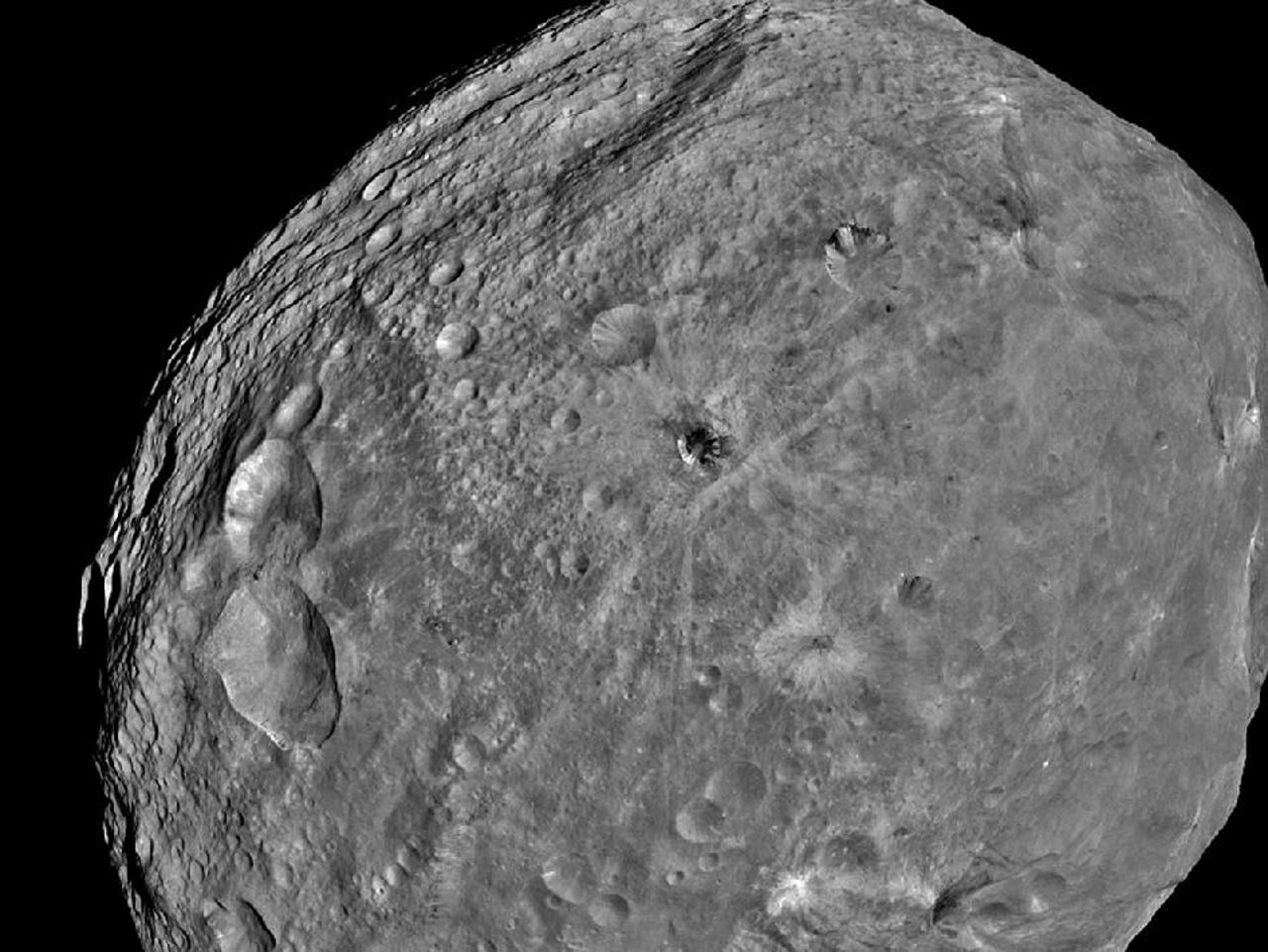After traveling 1.7 billion miles over four years, NASA's Dawn spacecraft has begun sending images of the asteroid Vesta back to Earth. NASA will begin the investigation of Vesta in more detail after it maneuvers the spacecraft into an orbit about 1,700 miles from the asteroid.
Here is the first full-frame photo of Vesta taken on July 24 from a distance of about 3,200 miles. Vesta is abou 114 million miles from Earth.
"We have been calling Vesta the smallest terrestrial planet," said Chris Russell, Dawn's principal investigator at UCLA. "The latest imagery provides much justification for our expectations. They show that a variety of processes were once at work on the surface of Vesta and provide extensive evidence for Vesta's planetary aspirations."
NASA/JPL-Caltech/UCLA/MPS/DLR/IDA

